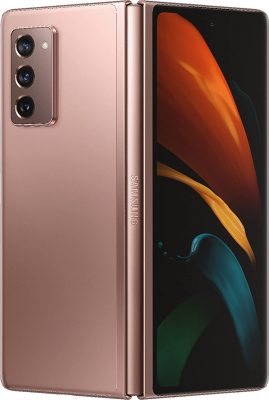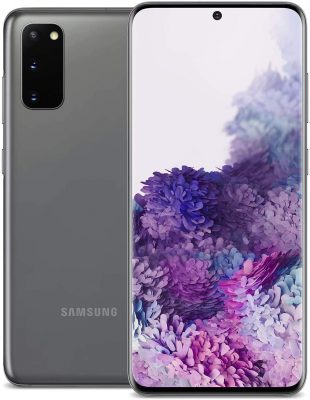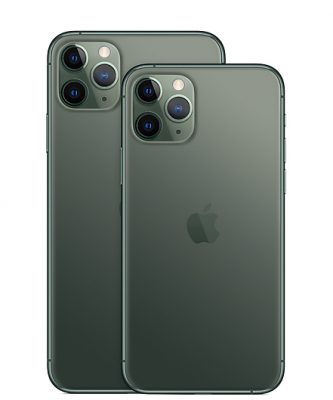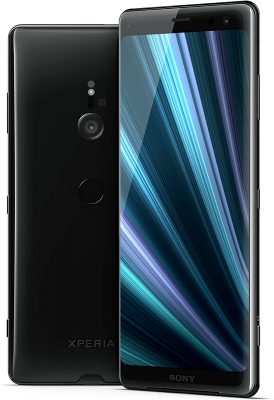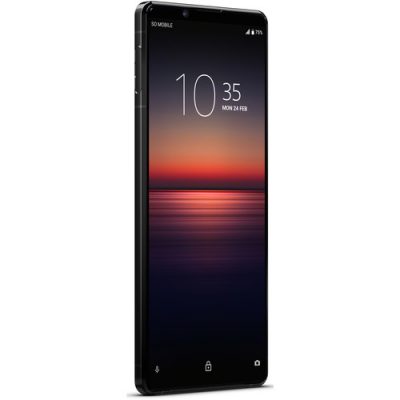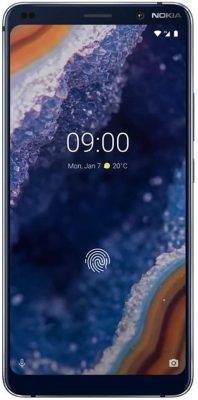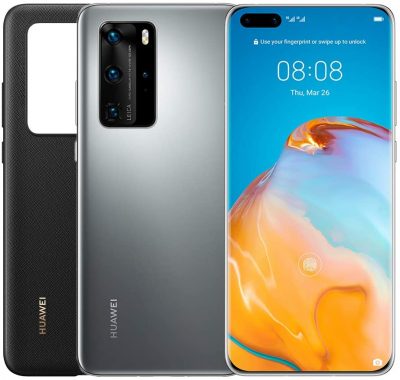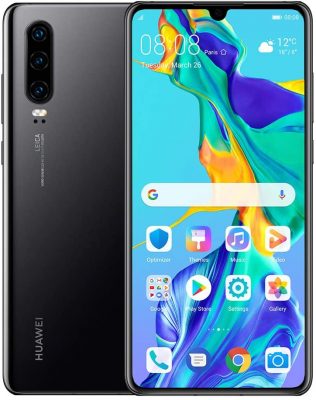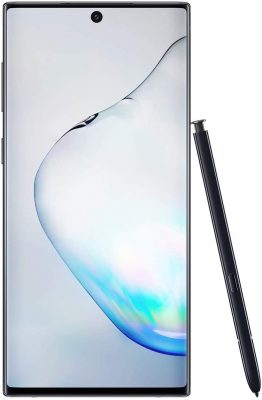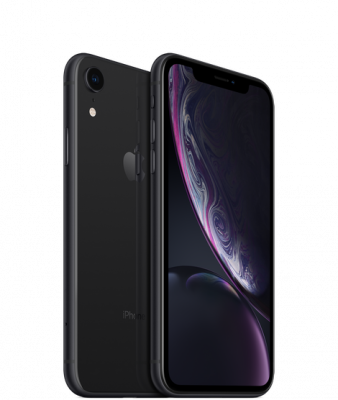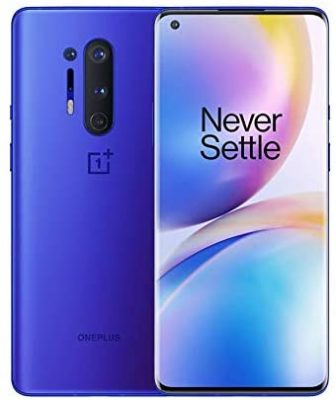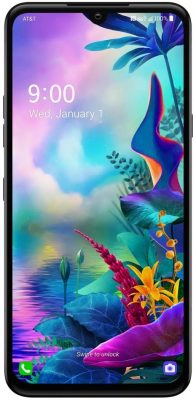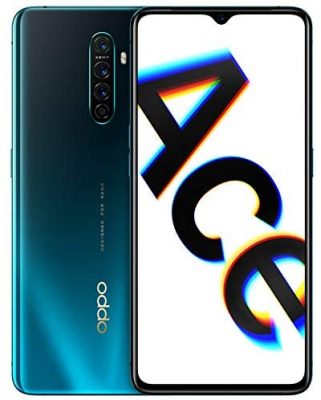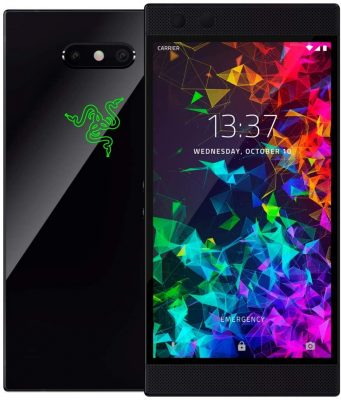Wireless charging phones have invaded the digital world and more smartphone consumer products are producing wireless charging capable phones today. They’ve definitely eliminated the inconvenience of dealing with dangling cables, especially when you’re charging your smartphones every time. With wireless charging phones, you simply put your smartphone on a wireless charging pad and watch the magic happen. But, there are minor disadvantages to consider. Wireless charging phones generally take a while to charge than the standard wired charging. Also, it’s more difficult to use your smartphones while they’re still on the wireless charging pad.
Nevertheless, if you are looking for the latest wireless charging capable phones today, you have come to the right place. We are listing down the best units with wireless charging features you can get.
Wireless Charging Phones To Get
Wireless charging technology is more evident in high-end smartphones with a glass rear. That said, wireless charging and metal don’t blend well. Regardless of the manufacturer, not all flagship smartphones are capable of wireless charging. The good news is a lot of smartphone brands are joining the trend of wireless charging capabilities.
Here are our top 15 choices. Check them out!
Samsung’s latest flagship device takes inspiration from the classic flip phones seen in the early 2000s. It is an impressive phone that fits perfectly into your pocket for easy safekeeping. Of course, its functionality is unquestionable given it runs the latest Android OS. However, what we want to highlight is the Samsung Galaxy Fold series is one of the best wireless charging phones today.
Obviously, the device is plenty capable, thanks to the Qualcomm Snapdragon 865 5G+ chip under its hood. Additionally, every pixel and color comes vividly through the 7.6 inches AMOLED display screen. Of course, we can’t go about without discussing its wireless technology. The Galaxy Fold series is capable of 11W wireless charging, which is an impressive improvement compared to the Galaxy Flip which can only do 10W on wireless charging.
PROS
- 1. Improved watts on wireless charging
- 2. Impressive camera system that can shoot 4K videos
- 3. Ellegant metallic finish
CONS
- 1. Isn’t Android 12 compatible
- 2. No memory card slot
The best Samsung wireless charging phones come in three variants – Galaxy S20, S20 Plus, and S20 Ultra. Without a doubt, Samsung has been the frontrunner in making high-end phones. Moreover, it now comes with wireless charging technologies. However, the competition doesn’t end there. In fact, it has definitely put its best foot forward. The jam-packed high-end features and specs in its flagship series are more developed.
Its wireless charging phones also come with reverse charging technology. This makes it easier for you to charge other wireless accessories. Samsung Galaxy S20 series boasts an impressive 12 GB/16 GB RAM and 128 GB/512 GB storage. Also, it has the latest Snapdragon 865, and an excellent 5,000 mAh battery.
PROS
- 1. Striking and high-end features and specs
- 2. Smooth performance with the 120 Hz display
CONS
- 1. Fingerprint sensor not that great
Apple has made a controversial release when the iPhone 12 came out. The absence of the USB-C type charger cord was striking. But it ushered in a new era for the iPhone as it becomes wireless charging compatible. Of course, this stark addition simply added value to the already feature-bundle smartphone in the market today.
The iPhone 13 also becomes the first iPhone device to have the improved A15 Bionic chip under its hood. That means all the features we have come to know an iPhone possesses have just been bumped up, giving users a limitless experience. There are really limited limits in the iPhone 13, considering the MagSafe wireless charging capabilities allow anyone to pull up battery juice in the absence of a power outlet.
PROS
- 1. Impressive camera system that includes Cinematic shooting
- 2. Brings back a design that makes handling the iPhone easy
- 3. Improved A15 Bionic chip
CONS
- 1. Expensive smartphone
Apple’s flagship for wireless charging phones includes the iPhone 11 and 11 Pro models. The iPhone 11 sports a 6.1” screen that makes it an attractive option if you prefer a bigger screen but not the most massive variant. Considering it’s an Apple smartphone, it definitely has a reputation for quality and durability.
Apple’s iPhone 11/11 Pro can provide a battery capacity that can last for a whole day. It comes with 64 GB, 128 GB, or 256 GB of storage, and runs on the A13 bionic processor.
PROS
- 1. Excellent ultrawide lens
- 2. Great value for a high-end wireless charging phone
CONS
- 1. No upgrades on the LCD screen
- 2. Rear side prone to fingerprints
Related: How to Use Wireless Charging on iPhone 7
The Sony Xperia fleet is as competitive as any Samsung Galaxy phone there is in the market today. The Xperia XZ3 sports an intelligent design that is elegant, durable, and intuitive look with its slim and borderless design. Sony says this design gives a different user experience when using the XZ3.
Furthermore, the XZ3 is a feature-bundled smartphone from its camera system, performance, down to its battery capacity. While it does not boast a large screen display, measuring only at 6 inches display, the P-OLED screen does bring every pixel to life. Moreover, aside from the wireless charging capability, the XZ3 has impressive battery life. This is made possible by the Smart Stamina, Qnovo Adaptive Charging, and Battery Care technologies giving the device a longer lifespan.
PROS
- 1. Longer battery life
- 2. Impressive phone performance thanks to the Qualcomm Snapdragon 845 chip under its hood
CONS
- 1. OS can only be updated up to Android 10
- 2. Has a smaller screen dimension compared to other wireless charging phones
Sony’s Xperia 1 II has definitely set the pace better in terms of smartphone speed performance. It features the latest Snapdragon 865 chipset from Qualcomm, 256 GB storage, and 8 GB RAM. It is Sony’s wireless charging phone contender that is packed with state-of-the-art technologies and an excellent camera.
Engineered by Sony’s Alpha camera experts, Xperia 1 II delivers impressive autofocus on a mobile phone. Xperia 1 II is also built with a CinemaWide 4K HDR OLED display. As a result, you can stream your favorite shows and movies in unparalleled cinema-quality on a handheld device. You can either listen through its stereo speakers or plug in your favorite earphones to the headphone jack.
PROS
- 1. Rare smartphone with comprehensive specs
- 2. Impressive stock Android performance
CONS
- 1. Selfie camera without autofocus
- 2. No 4K recording
- 3. Limited digital resolution
- 4. Slower charging compared to most wireless-charging phones
Nokia has made a triumphant return and was able to play catch up by collaborating with Android to produce its own fleet of smartphones. The Nokia 9 PureView exhibits the smartphone capabilities of this mobile phone manufacturer. The PureView boasts professional camera features with its five 12MP cameras with ZEISS Optics.
Moreover, it has a slim 8mm body, an almost borderless screen, and is 100% Qi charging capable. Speaking of Android, it runs on Android 10 OS, thus, making it a functionality-filled device that even the Average Joe can appreciate on a day-to-day basis.
PROS
- 1. Professional feature camera system
- 2. Powered by Qualcomm Snapdragon 845 chip
CONS
- 1. Has a smaller display dimension measuring only 5.99 inches
- 2. Storage is not expandable
- 3. Only has limited memory capacity option: 128GB 6GB RAM
The Huawei P40 Pro blurs the line between the digital world and the real world, thanks to its quad-curve overflow screen design. Plus, the 6.58 inches OLED screen pops every pixel and color off of the screen, giving a vibrant display. This feature is also credited for the immersive gaming experience further enhanced by the 5G technology under its hood.
Moreover, the Huawei P40 Pro alone is capable of 27W wireless charging and 27W reverse wireless charging. That’s fast charging in contrast to other wireless charging phones we have featured in this list.
Other things considered, this smartphone is feature and functionality-filled that will surely give anyone a good time.
PROS
- 1. Has a 50MP main camera and 32MP selfie camera.
- 2. Has 8GB of RAM capacity for three different memory options for this unit alone
CONS
- 1. Does not come with Google apps due to restrictions in the US
Huawei P30 should be one of your prospects when it comes to buying a wireless charging phone. If you’re looking for a sophisticated-looking phone with excellent camera features, then Huawei P30 is definitely your best option. Its cameras work like magic in low-light settings. Moreover, it provides numerous options through its wide-angle capabilities as well as P30’s 5x telephoto lenses.
It integrates an expandable 512 GB of storage, IP68 Dust and Water Resistance, a 6.47” display, Kirin 980 chipset, and of course, an impressive 4,200 mAh battery. With its battery capacity, you can go about your day without charging. It also has a reverse wireless charging feature. Thus, it lets you charge other smartphones or wireless accessories.
PROS
- 1. Beautiful and sleek design
- 2. Impressive camera features
CONS
- 1. Compatible only with Full HD Display
- 2. Poor EMUI
It’s no doubt, Samsung yet again earns another spot for one of the best wireless charging phones available. Samsung’s Galaxy Note 10 suite isn’t only built with 25W fast charging technologies. It also boasts 15W smart wireless charging capabilities. Aside from traditional and wireless charging, it has reverse wireless charging that you can also use for charging smartwatches, wireless headphones, and other wireless accessories.
The Note 10 features 8 GB RAM and 25 GB storage while the Note 10 Plus is made even better with 128 GB RAM and 256 GB/512 GB storage. Depending on the specific region, both wireless charging phones have the Snapdragon 855 or Exynos 9825 processor. Furthermore, another noteworthy upgrade of the Note 10/Note 10 Plus is its handy S Pen. In terms of battery capacity, Samsung’s Note 10/Note 10 Plus comes with either 3,500 mAh or 4,300 mAh batteries.
PROS
- 1. Handy S Pen
- 2. Sophisticated gradient colors
- 3. Sleek design
CONS
- 1. Extremely costly
- 2. Massive and slippery design
If you’re an Apple aficionado since time immemorial, you can go for the Apple iPhone XR as your wireless-charging phone companion. It comes with all the specs and performance of its more expensive siblings, Apple XS and Apple XS Max.
Despite being the cheaper iPhone variant, Apple XR’s battery life still stands out in the competition. Integrated with the A12 Bionic processor and lower resolution, iPhone XR’s battery lifespan is great. In fact, it’s the first iPhone that lasts up to a whole day without worry according to some independent testing labs.
PROS
- 1. Excellent battery performance
- 2. Colorful variants
CONS
- 1. Less impressive screen resolution
- 2. Still expensive
An economical challenger of Apple and Samsung’s premium offers, OnePlus 8 Pro is another wireless charging smartphone worthy to be on our list. The 8 Pro from OnePlus offers 5G capabilities, 3x optical zoom, and a smooth 120Hz screen refresh rate.
OnePlus 8 Pro comes with a 6.78” Fluid Display. This provides not only a better mobile gaming experience but also smooth scrolling functionalities. With a 4,510 mAh battery capacity, it has one of the fastest wireless charging capabilities available on the market.
It features 8 GB/12 GB RAM and 16-megapixel front camera. Furthermore, it has the latest Snapdragon 865 chipset. If you require a smartphone battery to last for the whole day, then OnePlus 8 Pro is the ideal wireless-charging phone for you.
PROS
- 1. Ultra-fast wireless and reverse charging feature
- 2. Supports 5G
- 3. Jam-packed with premium specs
CONS
- 1. Most costly OnePlus variant
- 2. Less storage capacity compared to 7T Pro
LG G8X ThinQ
Just when you thought LG had hopped on into the foldable smartphone bandwagon, it didn’t. Instead, LG’s G8X ThinQ provides users with dual-screen functions. Also, it is an excellent wireless-charging phone. It integrates a vibrant OLED screen, impressive battery, 6 GB RAM, 128 GB storage, and Snapdragon’s 855 chipset.
G8X ThinQ has an upgraded 4,000 mAh battery with a 9W wireless charging speed. It is one of the rare audiophile smartphones available today. LG’s G8X has stereo speakers and is capable of supporting a 32-bit HiFi Quad DAC.
PROS
- 1. Unique dual-screen experience
- 2. Massive P-OLED screen with HDR 10 capabilities
CONS
- 1. OLED panels’ max brightness levels need improvement
- 2. Poor 4K video recording
Oppo’s Reno Ace is the first-ever smartphone to support 65W wired charging capabilities. Now, it comes with an excellent ultra-fast wireless charging technology. Thanks to Reno Ace’s 40W AirVOOC wireless charger, Oppo becomes one of the best manufacturers of wireless charging phones. Its wireless charger is built with a fan that cools Oppo’s Reno Ace through a hidden side vent.
That said, the wireless charging pad cools down the temperature to below 39°C while charging. As mentioned by Oppo, the wireless charger fully charges the phone in less than an hour. Aside from being a Qi-compatible smartphone, it features 10W of reverse wireless charging features so other Qi-compatible devices can charge up with the Reno Ace.
PROS
- 1. Super smooth 90Hz display
- 2. Excellent battery performance and lifespan
CONS
- 1. Limited regional accessibility
- 2. Noisy stills when recording close-up videos/photos
ZTE Axon 10 Pro is the ideal wireless charging phone if you’re looking for an affordable flagship smartphone. It has 256 GB of expandable storage. In addition, it has 8 GB/12 GB RAM, Qualcomm’s Snapdragon 855 processor, and a 6.47” AMOLED display.
Integrated with the best of both worlds in terms of battery, it has a 4,000 mAh battery and is supported with Qi wireless charging standards. Also, it is a Quick Charge 4+ fast wired charging powered by Qualcomm.
PROS
- 1. Excellent battery capacity and lifespan
- 2. Remarkable front and rear camera performance
CONS
- 1. Tends to get warm under load
- 2. Dim screen display
Are Wireless Charging Phones Better Than Wired?
With the popularity of wireless charging phones, it brings the question more often – are wireless charging phones better? It’s safe to assume that it definitely boils down to how consumers use inductive charging and the frequency of when they recharge those battery juices on their smartphones. However, if we’re going to provide a more concrete response, then the short answer is yes. At the end of the day, inductive charging phones means becoming less dependent on running to the nearest power outlet, especially when your battery is drained. Of course, it’s also a matter of convenience.
There’s no need to untangle those annoying cables every time you charge your smartphones. You just simply place your smartphone on the wireless charging pad and it starts filling up your phone without any intervention. Everything looks sleek and elegant.
When you’re a frequent traveler with different kinds of smartphones, a wireless charging pad is one of the most convenient. This serves as a “one size fits all” smart inductive charging solution. It applies when all your mobile devices are compatible with wireless charging.
In terms of safety, wireless-charging phones decrease the occurrence of failure and electric shocks. We’ve all heard the news when it comes to deaths and injuries associated with the incorrect handling of cellphones and cables while charging. That said, inductive charging is even safer; once you’ll pick up your smartphone, the charging will stop.
How Much Is the Wireless Charger?
While we’re used to the standard way of charging our smartphones, a wireless charging pad revolutionizes the traditional way of charging. There are wide varieties of wireless charging pads aligned with Qi standards. It ranges from popular charging giants such as Anker to new challengers like RAVPower. Even tech giants Apple and Samsung themselves develop their own wireless charging pads. However, the good news is that popular brands like Qi, more or less, will perform their job in terms of refilling the battery juices of your mobile phones.
Essential factors such as size, material, durability, brand, and fast-charging capabilities all contribute when it comes to buying the right wireless charging pad for you. Not all wireless charging pads are created and priced equally. Depending on the brand, you can buy a wireless charging pad starting at $13.99 from RAVPower or go as high as $159 from Belkin.
Final Word
While traditional wired charging has been our “comfort zone” when it comes to refilling batteries, a wireless charging phone is worth a try. It liberates you from those annoying cords that generally break, be forgotten, or are misplaced in the middle of other stuff. And who knows, smart wireless charging will eventually become the new normal.
Are there any wireless charging phone brands that we’ve missed? Feel free to write your insights and recommendations in the comment section below. That way, you’ll also be helping other buyers when it comes to choosing the right wireless charging phone for their needs.

